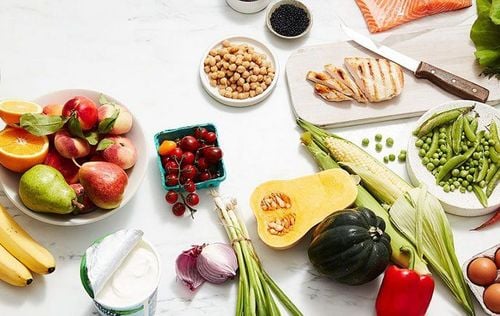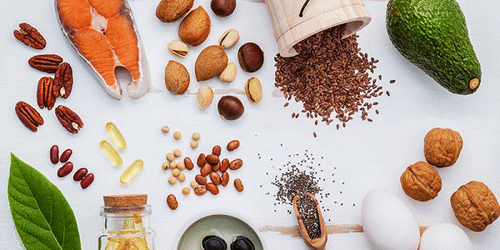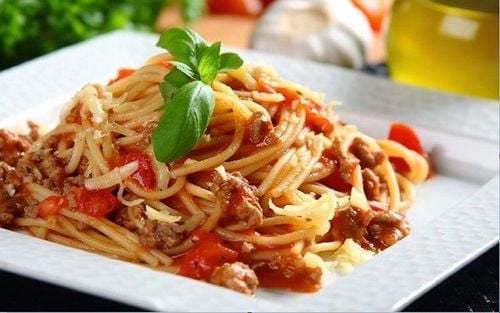This is an automatically translated article.
Prepared meals is a term that refers to the preparation of an entire meal or dish for the day. This is especially popular among busy people as it can save a lot of time. Having compact pre-prepared meals can also reduce portion sizes and help you reach your nutritional goals. me.
Since you have to determine what to eat beforehand, meal prep can help make healthier meal choices in the long run. Here are the steps to help you choose the most suitable, scientific and time-saving method.
1. Different ways to prepare meals
You might think that cooking next week's meals will take up your weekend. However, there are different ways to prepare meals that still save time. The most common ways to prepare meals include:
Make-ahead meals: Full pre-cooked meals that can be refrigerated and reheated at mealtime. This is especially handy for evening meals. Batch cooking: Make large batches of a particular recipe, then divide into individual portions to be frozen and eaten for the next several months. They are popular for lunch or dinner options. Individually portioned meals: Prepare fresh meals and divide them into individual servings, which are then refrigerated and eaten within the next few days. This is especially handy for a quick lunch. Ready-to-cook ingredients: Prepare ingredients needed for specific meals ahead of time as a way to cut down on cooking time in the kitchen. These methods will work best for you, depending on your goals and daily habits. For example, a pre-prepared breakfast can be best if you're looking to streamline your morning routine. On the other hand, keeping cooked meals in your fridge is especially handy for those with limited time in the evening. Different meal preparation methods can also be incorporated depending on your own circumstances.

Có nhiều cách khác nhau để chuẩn bị bữa ăn nhưng vẫn tiết kiệm được thời gian
2. Choose the right amount and variety of meals
You need to know how many meals to make and what to prepare in each meal, which can sometimes cause difficulties. The best way to plan meals is to first decide which meals you want to focus on and which meal preparation methods fit your lifestyle. Then check your time to decide how many breakfasts, lunches and dinners you need for the coming week.
Also, remember to account for the number of times you might eat out - for example, on dates, at lunch with friends or at client dinners. When choosing which meals to prepare, the best way to start is to prepare dishes that you already know. This will easily help you make the meal.
However, it is also important to avoid choosing just one recipe for the whole week. This lack of variety can lead to boredom and won't provide your body with the nutrients it needs.
Instead, try choosing meals that contain different vegetables and protein-rich foods, as well as different types of carbs like brown rice, quinoa, or sweet potatoes. Incorporating a vegetarian or vegan meal into your weekday meals is another way to add variety.
3. Some tips to reduce cooking time
Few people want to spend hours in the kitchen while preparing meals. The following methods will help streamline preparation and cooking time.
3.1. Stick to a specific time plan
Prepared meals work best when you stick to a regular schedule. Knowing exactly how much food you need to buy and prepare meals will help you form good habits. For example, you might spend Sunday mornings grocery shopping and preparing meals. Or you can choose Monday night to make lunch for the rest of the week.
The schedule is up to you and should fit into your weekly routine. Remember that picking specific times and sticking to them will simplify the decision-making process, saving you time and money for other things.
3.2. Combine the right recipes
Choosing and combining the right recipes will help you cook more efficiently. To save time, you should choose recipes that require different cooking methods. Having too many recipes that require the same appliance - an oven, for example - limits the number of dishes you can prepare at once.
This is especially important when choosing methods such as prepared meals or batch cooking. A good rule of thumb is to choose oven-cooked dishes and up to two dishes in one meal - for example, baked potatoes, a stir-fry and soup. Then just add meals that don't require cooking that don't need to be mixed, such as sandwiches or salads.
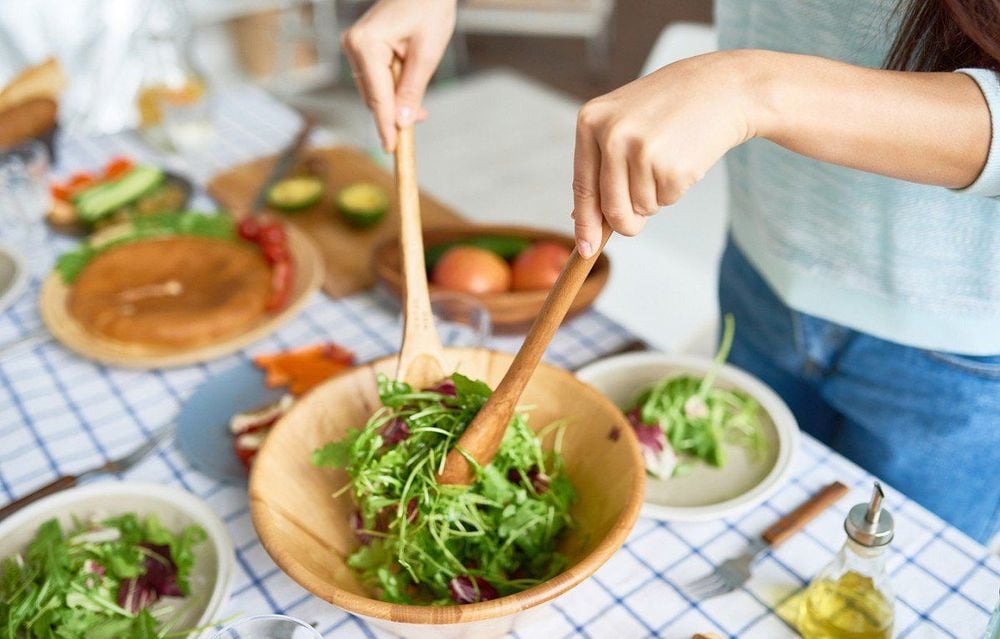
Những bữa ăn chuẩn bị sẵn sẽ hoạt động tốt nhất khi bạn tuân thủ một lịch trình thường xuyên
3.3. Schedule preparation and cooking time
A well-thought-out workflow will save you a lot of time in the kitchen. To best organize your prep and cooking time, start with the recipe that requires the longest cooking time. These are usually soups or grilled. While these dishes are in progress, focus on the rest.
Opt for cold meals last as they can easily be made while other meals are cooking. To save extra time, double-check the ingredients for all recipes before you start. This way, if two recipes call for the same ingredients, you'll be able to prepare them at the same time. Using automated devices like rice cookers or casseroles can streamline your cooking process even further.
3.4. Making a shopping list
Buying groceries can be a huge amount of time. To reduce this time, make a detailed food list. This will reduce your search time and speed up your shopping. Shopping for groceries once a week and using a delivery service are two ways to reduce shopping time.
4. Choose the right type of food container for storage
Your food container can make the difference between a great meal or making it very ordinary. Here are some recommendations for choosing food containers:
Sealed containers for ready-to-cook ingredients: Washable and reusable silicone bags and stainless steel containers are the best options. Great choice to keep dry, crunchy ingredients and food fresh. BPA-free microwaveable containers: these are convenient and better for your health. Glass pyrex or collapsible silicone containers are some good options. Refrigerator containers: These types of containers will help increase storage efficiency and reduce nutrient loss. Sealed Containers: These are good choices for lunches or dishes where the ingredients must be mixed before serving. Stackable or similarly shaped containers maximize space in your fridge, freezer or work bag.
5. Safely cook, store and reheat food
Food safety is an important but easily overlooked factor in a meal. Cooking, storing and reheating food to the right temperature can prevent food poisoning. Here are some approved food safety guidelines:
Pay attention to proper temperature: Make sure your refrigerator is kept at 40°F (5°C) or below and freeze at 0°F (-18°C) or below. Cool foods quickly: Always refrigerate fresh foods and meals within two hours of purchase or cooking. For quick cooling, spread cooked food evenly in containers and place immediately in your refrigerator. Record storage time: Cook fresh meat, poultry, and fish within two days of purchase and red meat within 3 to 5 days. And need to store them in the freezer compartment of the refrigerator. Cook to the right temperature: Meats should be cooked until they reach an internal temperature of at least 165°F (75°C), as this will kill most bacteria. Defrost food safely: Defrost foods or meals in the refrigerator instead of leaving them outside. For faster defrosting, soak food in water, changing the water every 30 minutes. Reheat food just once: The more you cool and reheat food, the higher your risk of food poisoning. This is why defrosted food should only be reheated once. Reheat food to the right temperature: All meals should be reheated to 165°F (75°C) before serving. Frozen meals should be reheated and eaten within 24 hours of defrosting. Use labels: Remember to label and date your containers so you can consume your food during food-safe times. Eat food at the right time: Only eat foods stored in the refrigerator for 3-4 days and foods stored in the freezer for 3-6 months. See also: The best way to preserve food fresh for a long time
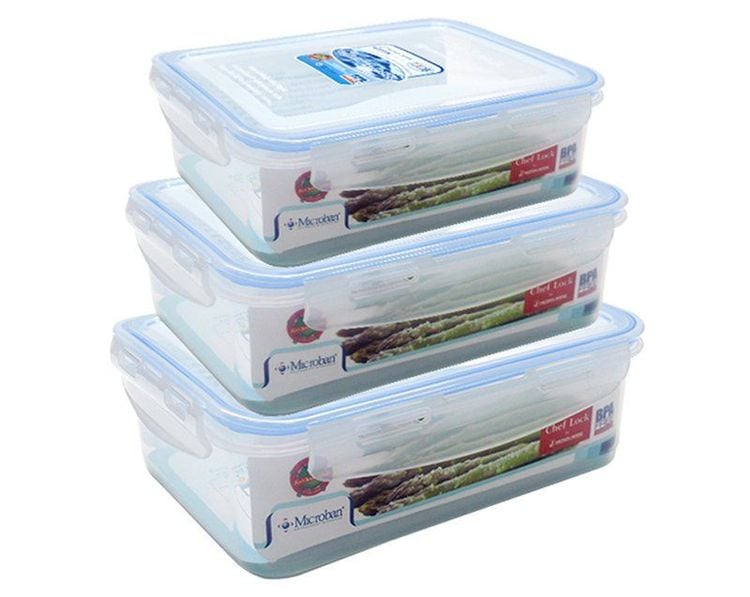
Hộp đựng thực phẩm của bạn có thể tạo ra sự khác biệt giữa một bữa ăn tuyệt vời
6. Steps to Successful Meal Preparation
Preparing high value meals in advance for a week is always a challenge, especially for first timers. Below, you'll find a simple step-by-step guide to streamlining your meal prep process.
Step 1: Choose your meal preparation method of choice. These can also be a combination of methods and should be based on your lifestyle and nutrition goals. Step 2: Stick to a schedule. Pick a day of the week to plan your meals, do your grocery shopping, and cook. Step 3: Choose the right number of meals. Keep in mind your schedule and the outings you've planned for the week. Step 4: Choose the right recipes. When starting out, stick to a recipe you already know. Step 5: Reduce the time you spend on grocery shopping. Make a grocery list or shop for groceries online. Step 6: Schedule more time in the kitchen. Choose which meal to cook first based on the cooking time. Step 7: Store your meal. Use safe cooling methods and appropriate containers. Refrigerate meals you plan to eat within 3-4 days, then label and refrigerate the rest.
Please dial HOTLINE for more information or register for an appointment HERE. Download MyVinmec app to make appointments faster and to manage your bookings easily.
Reference source: healthline.com
SEE MORE
Healthy breakfast: quick, flexible option Does heating food in the microwave lose vitamins? The way you cook it affects the nutrient content. Leftovers in the refrigerator: how to store, reheat?




